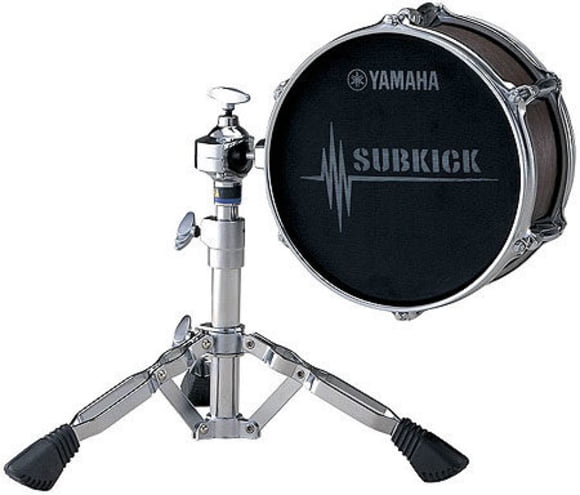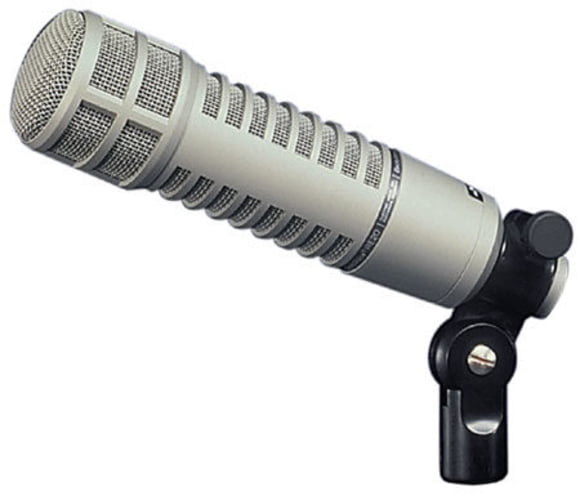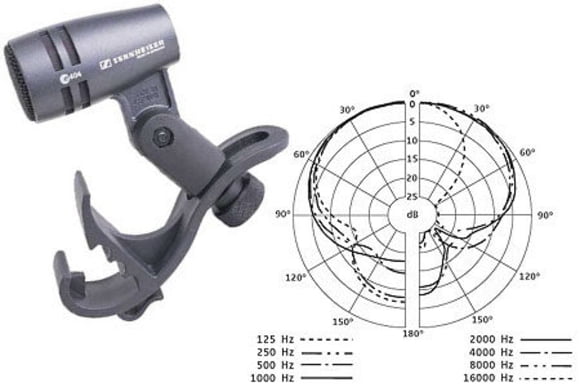4. Differences
Not all dynamic mics are created equal. Differences in design and materials contribute to each microphones unique sound characteristics. Some important specs include:
Sound Pressure Level
The volume a microphone can handle must be considered to determine its range of application. Putting a vintage valve condenser microphone inside a bass drum will probably result in a large repair bill; knowing the SPL rating of your microphone is usually crucial to knowing how to use it safely. Unlike some condenser microphones, most dynamics can handle a high level of sound pressure. For this reason, a dynamic microphone may be used in situations where few other mics would survive. Exceeding a dynamic mics maximum SPL will result in audible distortion, but is unlikely to cause permanent damage to the capsule. For this reason, some dynamic mics have a maximum SPL of N/A - in other words, dont worry about it.
Frequency Response
Frequency response is another important specification. Almost all microphones have a sound a microphones frequency response imparts characteristics to the sound it captures, rather like a filter in front of a camera lens; everything seen through it may have a certain colour. A perfect linear response is not always ideal; few microphones exhibit such a response, especially dynamic designs, but this is not necessarily a bad thing. A sound engineer may choose a mic based on the way it colours the sound. For example, a vocalist will often sound better if certain frequencies are emphasized while others are de-emphasized. Conversely, if a mic is very good at picking up low frequencies you probably wouldnt use it for miking a triangle.

Yamaha Subkick dynamic bass drum microphone
Frequency response can also be affected by two other factors: distance and direction. If a mic is positioned very close to the sound source it may exhibit proximity effect (boosted bass frequencies). Radio DJs often choose a microphone with a pronounced proximity effect because it makes their voices sound fuller. Also, if a sound arrives to the mic from an angle that its insensitive to (off axis), the frequency response may be greatly affected.

EV RE20 large diaphragm dynamic microphone
Polar Pattern
As we have seen, a microphones sensitivity is not necessarily uniform in all directions. The shape of a microphones response, known as its polar pattern, is another important component to evaluate when selecting a microphone. Common polar patterns include cardioid (heart-shaped), supercardioid and hypercardioid (pointier heart-shaped responses), omnidirectional, and figure-8 (bidirectional). The shape of the microphone itself will affect its polar pattern, which is why many omnidirectional measurement microphones are small; this way the body of the microphone doesnt block sound from behind the mic as much as a larger mic. Not all frequencies will create the same shape, so the polar plots of a mic may be given for several frequency ranges. Directional microphone patterns such as cardioid, hypercardioid and supercardioid are often chosen for vocals and close miking instruments precisely because of their off-axis rejection. Omnidirectional mics are rarely used in loud live situations where feedback is a concern, though they are often excellent when used in the more controlled environment of the recording studio, for recording larger instruments such as grand piano or a wide percussion setups which might otherwise require numerous directional microphones.

Sennheiser E604 and cardioid polar pattern
Transient Response
A microphones transient response indicates how fast the diaphragm will respond to sudden sounds, such as the attack of a pick or the strike of a drum. Larger diameter diaphragms usually react more slowly than smaller diaphragms, which is why small diaphragm condenser microphones are often chosen for recording cymbals. Dynamic mics with their heavier diaphragms will exhibit slower transient responses than condenser mics.
Impedance
Microphones can be differentiated by their impedance, a measure of their inherent electrical resistance measured in ohms (?). High impedance mics (rated 10k ohms and above) are susceptible to interference and loss of signal quality, particularly with long cables, and are usually restricted to non-professional applications. Low impedance mics (600 ohms or less) tend to be used in professional situations where microphone cables and snakes can reach 100m or more. Modern mixing desks can usually adapt to any microphone impedance.





